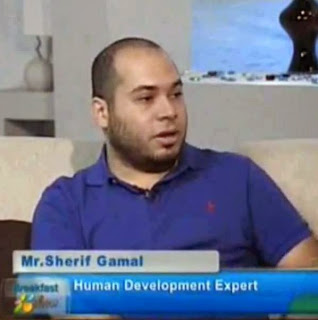Sherif Gamal Siam
Sherif Gamal Siam was a 29-year-old telecommunications engineer and a human development trainer. Aside from his jobs was also active in charity work. He was passionate about human development which is what lead him to become a trainer. He also helped young children memorize the Holy Qur’an. He had no political affiliations but participated in the January 25th Revolution as well as the June 30th demonstrations against the Muslim Brotherhood.
On the 14th of August 2013, Sharif wanted to go out, but his father urged him to stay at home fearing that he would be harmed by security forces that were in the process of suppressing the sit-in at Rabaa al Adawiya Square. Sharif insisted on going out even though his house was in Nasr City where the sit-in was taking place. Upon leaving his house he was arrested by police forces for no reason. A video taken by an eyewitness documented this moment of police brutality.
Sharif was placed in the police vehicle and when he didn’t return home by the end of the day, his father Dr. Gamal Siam and his brother Mohammed started searching for him in hospitals, in police stations, and in Alfath Mosque where hundreds of bodies from the Rabaa al Adawiya Massacre were transferred, but Sharif was nowhere to be found.
On the morning of August 15th, Sharif posted on a message on his Facebook: “To everyone who reads this post: Tell my father that I am in the Cairo Stadium.” He wanted his father to know he was still alive. Later Sharif and others were then transferred to be put before a prosecutor where he and the other defendants were sentenced to 15 days in prison. At 6:00 am on Sunday, August 18th, the police sent the 45 prisoners including Sharif to Abu Zaabal prison in a prisoner transport vehicle that could only accommodate 24 people. The car arrived at the prison at 7:00 am, but the police forces left the car locked up for ten hours in the prison courtyard.
Temperatures exceeded 40 degrees Celsius that day, and without any water or any source of fresh air in the overcrowded car; the prisoners began to fall unconscious after trying to open the door and loudly screaming for someone to save them. When the car door was finally opened, the police threw tear gas canisters inside and shut the door.
Dozens burned inside the car—their bodies turned black. Sharif was among the 37 of those who lost their lives that day.
After the public’s rage to the brutal killings, the Ministry of the Interior issued a statement that said that the prisoners had abducted one of the police officers and the harsh treatment was justified in order to force them to release him. Soon after the ministry denied the statement as soon as the public found out that the prisoners were bound by restraints. The Ministry of the Interior then issued another statement saying that members of the Muslim Brotherhood tried to smuggle the prisoners out.
The forensic reports indicated that a type of tear gas was used, but Muhammad Jamal Siyam, Sharif’s brother, said in a press conference that it was actually the internationally banned phosphine gas and that evidence is being hidden by the lies of the Ministry of the Interior.




